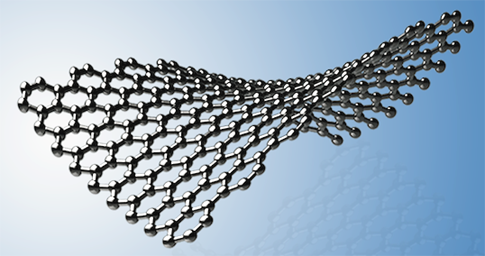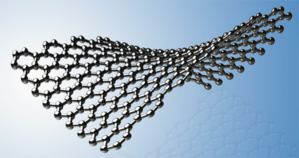Thanks to the joint venture of the scientists of Turkey and Glasgow, now “large sheets of high grade graphene” will be available at a hundred times “cheaper” price than ever before. The team devoted their time to figure out the production method and succeeded with flying colours.
The journal of “Scientific Reports” published the newly found method on the 18th of November 2015 issue, wherein the method elaborated “uses the same type of commercially-available copper often used to manufacture lithium-ion batteries”.
The researches came together from the “University of Glasgow” and “Bilkent University”, the latter is situated at Ankara. According to them, the new method is better over any that preceded the same keeping its “electrical and optical performance in transistors” in mind. The co-author of the paper, Dr Ravinder Dahiya of University of Glasgow commented:
"Our process produces high-quality graphene at low cost, taking us one step closer to creating affordable new electronic devices with a wide range of applications, from the smart cities of the future to mobile healthcare”.
The organic structural arrangement of Graphene is single layer thick, made up of “carbon atoms” that are “arranged in a repeating hexagon pattern”. It is a “two-dimensional substance”, the discovery of which was made in the year of 2004. Since then, it has been under the lime light on a “widespread” scale because of its “unusual and technologically-promising properties”.
Graphene is a good “conductor of heat and electricity”, besides being “stronger than steel” itself. It is utilised in many “commercial applications” that requires smarter technology as in electric cars for instant recharge, solar panels for increasing efficiency and in batteries that look towards cost-effectiveness.
The process recently discovered requires “a specific kind of cheap copper foil” for its “base surface”. In fact, the very same copper is often utilised “in lithium-ion batteries” as negative-electrodes. In Dr Dahiya’s words:
"The commercially-available copper we used in our process retails for around $1 per square metre, compared to around $115 for a similar amount of the copper currently used in graphene production. This more expensive form of copper often required preparation before it can be used, adding further to the cost of the process."
The new breakthrough will prove beneficial to companies that are investing in “the possible use of graphene for a whole host of cutting-edge technologies”. Moreover, yet another paper that came out in “Nature Physics” deals with “a new technique that traps light on the surface of graphene” the said technology uses “pulses of laser lights” and is able to “generate a variety of miniature optical circuits”. The lead author of the paper, Dr Tom Constant of “the University of Exeter's Physics and Astronomy Department” stated:
"Computers than can use light as part of their infrastructure have the potential to show significant improvement. Any advance that reveals more about light's interaction with graphene-based electronics will surely benefit the computers or smartphones of the future."
References:
www.businessgreen.com
The journal of “Scientific Reports” published the newly found method on the 18th of November 2015 issue, wherein the method elaborated “uses the same type of commercially-available copper often used to manufacture lithium-ion batteries”.
The researches came together from the “University of Glasgow” and “Bilkent University”, the latter is situated at Ankara. According to them, the new method is better over any that preceded the same keeping its “electrical and optical performance in transistors” in mind. The co-author of the paper, Dr Ravinder Dahiya of University of Glasgow commented:
"Our process produces high-quality graphene at low cost, taking us one step closer to creating affordable new electronic devices with a wide range of applications, from the smart cities of the future to mobile healthcare”.
The organic structural arrangement of Graphene is single layer thick, made up of “carbon atoms” that are “arranged in a repeating hexagon pattern”. It is a “two-dimensional substance”, the discovery of which was made in the year of 2004. Since then, it has been under the lime light on a “widespread” scale because of its “unusual and technologically-promising properties”.
Graphene is a good “conductor of heat and electricity”, besides being “stronger than steel” itself. It is utilised in many “commercial applications” that requires smarter technology as in electric cars for instant recharge, solar panels for increasing efficiency and in batteries that look towards cost-effectiveness.
The process recently discovered requires “a specific kind of cheap copper foil” for its “base surface”. In fact, the very same copper is often utilised “in lithium-ion batteries” as negative-electrodes. In Dr Dahiya’s words:
"The commercially-available copper we used in our process retails for around $1 per square metre, compared to around $115 for a similar amount of the copper currently used in graphene production. This more expensive form of copper often required preparation before it can be used, adding further to the cost of the process."
The new breakthrough will prove beneficial to companies that are investing in “the possible use of graphene for a whole host of cutting-edge technologies”. Moreover, yet another paper that came out in “Nature Physics” deals with “a new technique that traps light on the surface of graphene” the said technology uses “pulses of laser lights” and is able to “generate a variety of miniature optical circuits”. The lead author of the paper, Dr Tom Constant of “the University of Exeter's Physics and Astronomy Department” stated:
"Computers than can use light as part of their infrastructure have the potential to show significant improvement. Any advance that reveals more about light's interaction with graphene-based electronics will surely benefit the computers or smartphones of the future."
References:
www.businessgreen.com






